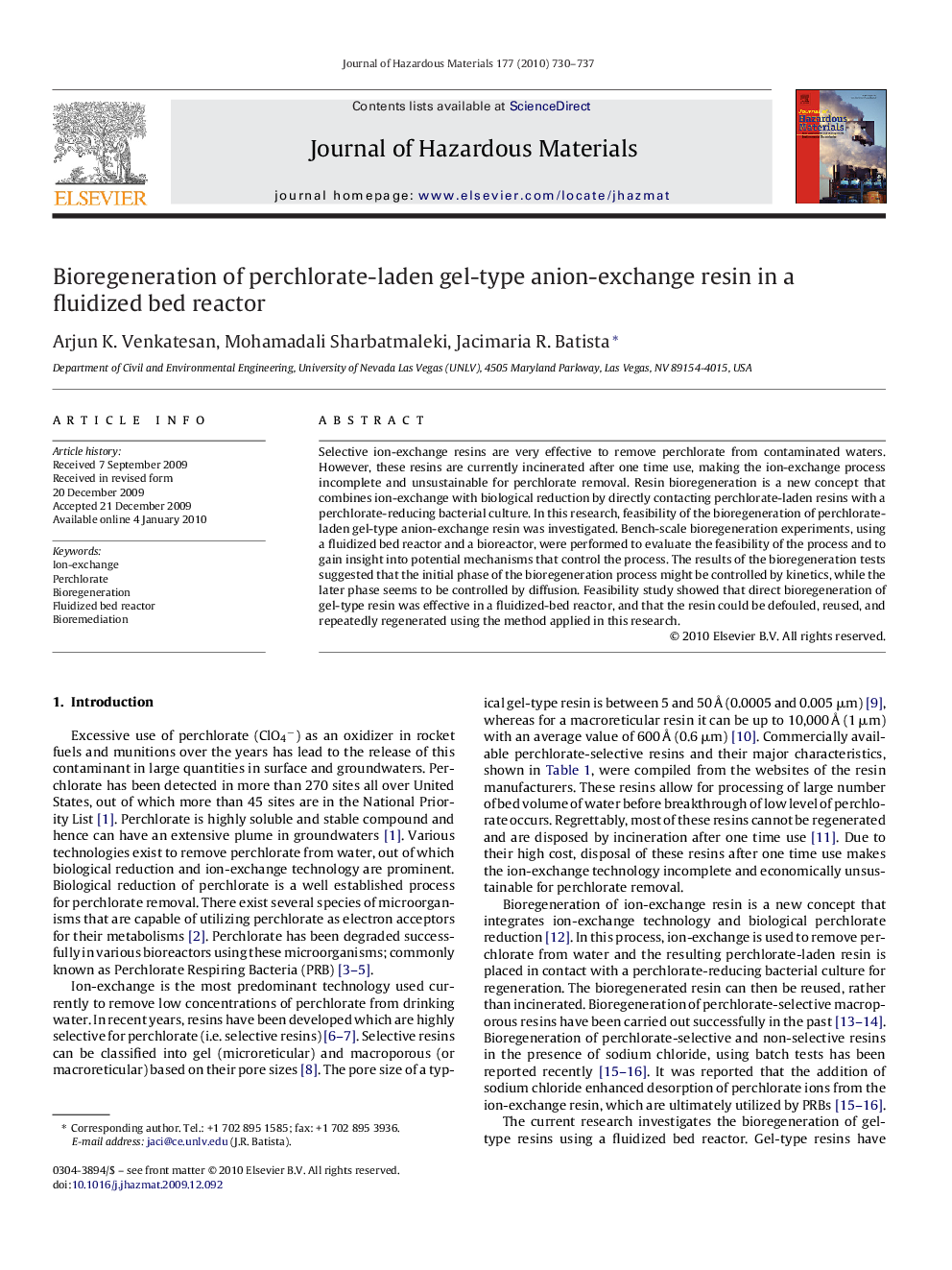| Article ID | Journal | Published Year | Pages | File Type |
|---|---|---|---|---|
| 580920 | Journal of Hazardous Materials | 2010 | 8 Pages |
Abstract
Selective ion-exchange resins are very effective to remove perchlorate from contaminated waters. However, these resins are currently incinerated after one time use, making the ion-exchange process incomplete and unsustainable for perchlorate removal. Resin bioregeneration is a new concept that combines ion-exchange with biological reduction by directly contacting perchlorate-laden resins with a perchlorate-reducing bacterial culture. In this research, feasibility of the bioregeneration of perchlorate-laden gel-type anion-exchange resin was investigated. Bench-scale bioregeneration experiments, using a fluidized bed reactor and a bioreactor, were performed to evaluate the feasibility of the process and to gain insight into potential mechanisms that control the process. The results of the bioregeneration tests suggested that the initial phase of the bioregeneration process might be controlled by kinetics, while the later phase seems to be controlled by diffusion. Feasibility study showed that direct bioregeneration of gel-type resin was effective in a fluidized-bed reactor, and that the resin could be defouled, reused, and repeatedly regenerated using the method applied in this research.
Related Topics
Physical Sciences and Engineering
Chemical Engineering
Chemical Health and Safety
Authors
Arjun K. Venkatesan, Mohamadali Sharbatmaleki, Jacimaria R. Batista,
